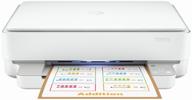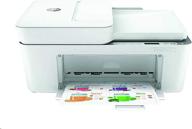
Review on 🖨️ HP OfficeJet Pro 8210 Wireless Color Printer - HP Instant Ink & Amazon Dash Replenishment Ready (D9L64A) by Frank Nguyen

High performance office printer
Update - January 24, 2017 - After using this printer for several months I am downgrading it from five stars to two. How does a printer work well when it works? I got the error message "Printhead not installed" three times. It blocked several times and this morning there was a new illegible error message which I uploaded. All errors cleared after power off (sometimes just unplug worked), but WTF HP? Do you guys have a summer intern that designed this thing? If this continues, I'll give up and go back to Epson. This is very bad because when it worked, it worked very well. However, reliability is key and this pup can't keep up. Here is a first test report: Short test: The HP OfficeJet 8210 is a powerful printer for small to medium print volumes. The full range of functions, including remote management, high printing speeds, excellent print quality and HP Instant Ink software, make it suitable for office use. The lack of scanning and faxing capabilities is a significant downside unless those capabilities are provided by other machines nearby. Business Printing: Excellent black and white resolution. The 2-point font is legible with a magnifying glass and on decent paper. A normal-sized font - 8 points and larger - is crisp and clear. My 13-page test document printed in pretty much exactly a minute. One of my complaints about HP printer drivers is that they print the first page first, then the second, and so on. In the resulting stack, the first page is at the bottom and the last page is at the top. There is a checkbox to print pages in reverse order so the last page is on the bottom and the top page is on top, but this slows things down considerably. A document that took 1:00 minutes to print printed "in reverse" in 1:19 minutes. In contrast, my Epson WorkForce 845 and Canon MX922 define the normal order in a human-readable way. The first page is at the top and the last page is at the bottom. This is HP's reverse definition, and if you have both on the same network, you'll need to make sure the 'Reverse order' checkbox is checked appropriately, depending on which printer you choose...more than once I've printed something and had to reach for the conclusion manually. (By the way, Epson printed the same number of hours both ways...1:17 minutes. Canon printed my test document in 1:33. Printing the pages backwards took the longest at 1:49 minutes.) Below Line output is crisp and fully usable for Office documents. The speed is competitive but you have to be careful with the page order. Photo printing: The HP OfficeJet Pro 8210 is not intended as a high quality photo printer. It works but the color shading is very noticeable compared to my Canon printers (MX922 and iP8700). If you want the highest quality photo prints look elsewhere, but if you're willing to put up with decent but not the best prints then this is fine. Plus, HP Instant Ink is a real benefit when printing photos. More on that in the next section. High-quality photo printing requires paper with a special coating that instantly captures droplets of ink. HP publishes two classes: Advanced and Premium Plus. Another proof that this is not a photo printer is the paper selection in the printer driver... Premium Plus is not listed. Advanced paper is less expensive and works well. The default color balance is a bit colder than my Canon printer, but can be adjusted if you use photo editing software. Instant Ink: HP Instant Ink is a monthly subscription that automatically sends ink when the printer runs out of ink. The printer is in constant communication with the HP servers. There are three program levels: Low Volume - 50 pages per month for $2.99 per month. Additional Pages: 15/$1.00. Average volume is 100 pages/month at $6.99/month. Additional Pages: 20/$1.00. High Volume - 300 pages/month for $9.99/month. Additional Pages 25/$1.00 All plans allow you to flip through unused pages up to the monthly subscription limit. For example, if you have a 300 pages per month plan, you can have up to 300 extra pages in the reserve bank. Additional pages will be charged after you have used up the monthly quota plus what is in the rollover account. Volume. It gets worse if you greatly exceed it or decrease it slightly. In the 300 pages per month plan, 300 pages (that's only 10 per day) costs ₵3.3 each. Due to the overage fee, this increases to ₵3.8 per page for 1000 pages per month. On the other hand, the cost per page is increasing rapidly. If you only print 150 pages but are signed up for a 300 pages per month plan, your cost per page doubles to ₵6.6 per page. To deter theft, Instant Ink cartridges are serialized and tied to the printer. An employee cannot take a cartridge home at night, print a large number of pages, and put them back in the morning. For home users, where usage is much less predictable, Instant Ink has advantages in another area - printing. a photo. Since the Instant Ink fee is based on the number of pages, it costs the same to print a photo as it does to print one page. Since traditional 8x10 inch photo cartridges use a dollar of ink, this can be a huge savings. On the other hand, if you mainly print a few pages of text from time to time, you should think about purchasing regular XL ink cartridges. Instant Ink is convenient, but the cost per page is high on low-volume plans. Other items... The printer's internal web server allows you to remotely monitor and control all of the printer's functions. For corporate installations, access to the website can be controlled with an administrator password. Asset tracking information can also be stored in the printer's memory. This is another important feature for businesses. The default time zone is set to Casablanca, Monrovia. If you don't live there, you can change it to your time zone. Like almost everything starting with your phone, the printer gets its reference time from an internet time server. It uses the time zone setting to calculate the offset from it. (If your company has one, you can also set it to use an internal time server.) The power button is very, very, very cheap. You actually bend a piece of plastic when you press it. It's a low duty cycle part, but I'm surprised the HP engineers made something so flashy so cheesy. I hope this doesn't reflect other design compromises within the printer. If you end up using this at home and only have room for a printer, I highly recommend you take a closer look at the OfficeJet Pro 8710. It's about the same price and footprint, and looks like it has the same press (according to spec), but also includes scanning, copying, and faxing. I don't often copy or fax at home, but it's nice to have a machine that can do it when I need it.
- Inkjet printer
- Not as thick as other models
New products
Comments (0)
Top products in 🖨️ Inkjet Printers
Another interesting products

PeriPage Mini Portable Paper Photo Printer: 58mm Thermal Printing, Wireless Bluetooth, Android iOS Compatible (Yellow)

3 Review
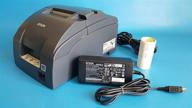
Epson TM-U220B Dot Matrix Receipt Printer with Ethernet, Auto Cutter, and Power Supply Included

4 Review
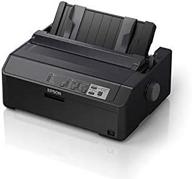
Epson LQ-590II Monochrome Dot Matrix Printer - 24-pin

7 Review
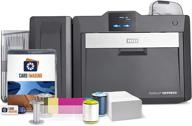
🖨️ Fargo HDP6600 Dual Sided 600 DPI ID Card Printer & Supplies Bundle: Unveiling High-Quality Card Printing with Advanced Imaging Software 94640

5 Review


